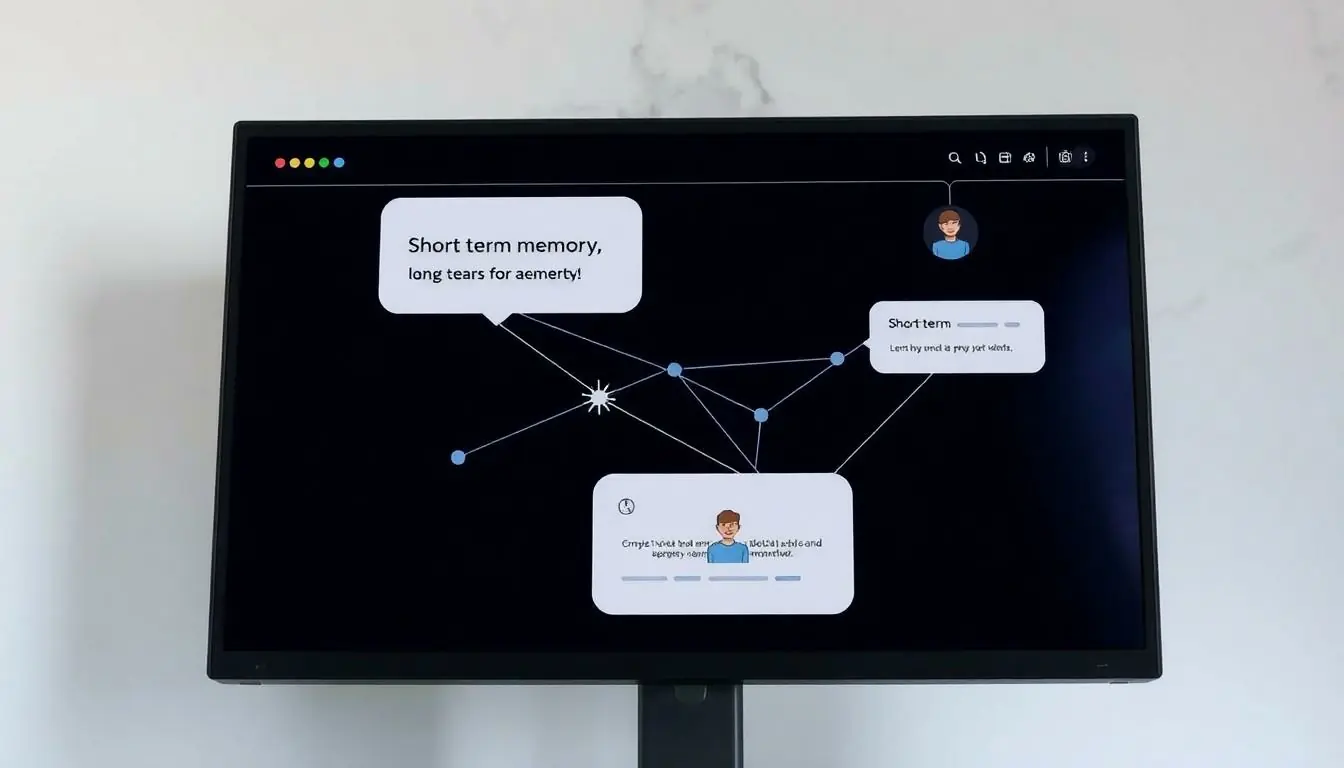Table of Contents
ToggleIn a world where conversations can feel like a game of telephone, ChatGPT stands out by actually remembering what’s been said. Imagine chatting with a friend who never forgets your favorite pizza toppings or that embarrassing story from last summer. That’s the magic of context retention!
But how does this digital conversationalist pull off such a feat? It’s not sorcery or a hidden crystal ball; it’s all about clever algorithms and a dash of machine learning. By understanding context, ChatGPT keeps discussions flowing seamlessly, making it feel like you’re talking to someone who genuinely gets you.
Understanding Context in ChatGPT
ChatGPT excels at retaining context during conversations, enhancing user interaction. This ability stems from sophisticated algorithms and machine learning techniques.
Definition of Context
Context refers to the information surrounding a specific conversation or text. It’s the background knowledge that influences interpretation and meaning. In the case of ChatGPT, context includes prior messages and relevant details that shape responses. This dynamic adaptation helps maintain a coherent flow, enabling users to engage naturally. Each interaction builds upon earlier exchanges, creating a more personalized experience. Context in conversation goes beyond mere words; it encompasses intent, tone, and relevant subject matter.
Importance of Context in Conversations
Context plays a crucial role in effective communication. Conversations often depend on shared information to convey meanings accurately. In ChatGPT, understanding context increases relevance in responses, making interactions feel more natural. Without context, messages may become ambiguous or misinterpreted. The model enhances user satisfaction through context-sensitive replies. Retaining context also reduces misunderstandings, ensuring smoother dialogues. Ultimately, effective context management leads to enriched user experiences and deeper engagement.
Mechanisms of Context Retention

ChatGPT utilizes advanced mechanisms to retain context, enhancing interaction quality. These systems comprise short-term and long-term memory capabilities, each playing a vital role in maintaining conversational flow.
Short-Term Memory
Short-term memory enables ChatGPT to track ongoing conversations efficiently. This mechanism works with recent exchanges, typically within a bounded limit of context. For instance, if a user prompts the system about a specific topic, it offers responses based solely on the immediate interaction. The focus remains on immediate relevance, aiding in quick, adaptive replies. This contextual awareness fosters fluid dialogue and supports coherent conversations without losing track of pertinent details.
Long-Term Memory
Long-term memory facilitates deeper retention of information over extended interactions. By storing user preferences and past conversations, ChatGPT personalizes interactions over time. For example, when users revisit previous topics, the system recalls past details, creating familiarity and enhancing user experience. This persistent memory allows ChatGPT to build relationships, making it feel less like a tool and more like an engaging conversational partner. Users benefit from richer interactions due to this capability, which promotes ongoing learning and adaptation.
Factors Influencing Contextual Understanding
Contextual understanding in ChatGPT relies on various factors that contribute to how well it remembers information within a conversation.
User Input and Prompts
User input significantly affects ChatGPT’s ability to grasp context. Clear, detailed prompts enhance response quality by providing necessary background information. Specificity in user questions helps tailor replies to fit the conversation. For instance, mentioning previous topics allows ChatGPT to generate coherent, relevant responses based on prior interactions. Engaging in back-and-forth dialogue further strengthens contextual awareness. Users who consistently reference key details improve overall communication effectiveness, leading to richer exchanges.
Model Limitations
Limitations of the model also play a role in contextual understanding. ChatGPT possesses finite short-term memory, which can restrict its ability to retain extensive details from prior messages. When conversations exceed its capacity, it may forget earlier points. Even though long-term learning occurs, preferences may not always be accurately recalled. Additionally, contextual shifts or abrupt changes in topic can challenge the model’s coherence. These limitations underscore the importance of user guidance in maintaining a smooth conversational flow.
Examples of Contextual Memory in Action
ChatGPT demonstrates its contextual memory through various practical examples. Engaging in a dialogue with it reveals how it skillfully maintains conversational flow.
Conversational Continuity
Conversational continuity occurs when ChatGPT retains information throughout the discussion. A user might ask about their favorite recipe, leading to a query about cooking techniques. ChatGPT connects this context, recalling the earlier discussion while providing relevant suggestions. Users appreciate the seamless transitions between topics, enhancing interaction satisfaction. Retaining details from previous exchanges showcases ChatGPT’s efficacy in preserving continuity. By tracking conversational cues, it can respond appropriately, ensuring that dialogue remains consistent and coherent.
Contextual Relevance in Responses
Contextual relevance shapes the quality of ChatGPT’s replies. When users provide specific prompts, it can tailor responses accordingly. For instance, if a user inquires about vacation spots and later asks about packing tips, ChatGPT relates its answers back to the context of travel. Specific details boost the model’s capacity to deliver pertinent information, enriching overall interaction quality. Adept understanding of user intent further empowers ChatGPT to provide meaningful responses. Recognizing context enables it to address needs effectively, thereby fostering deeper engagement and satisfaction.
ChatGPT’s ability to remember context significantly enhances user interactions. By effectively utilizing both short-term and long-term memory, it creates a more personalized experience that resonates with users. The model’s capacity to adapt and respond based on previous exchanges fosters a natural flow in conversations.
While it excels in maintaining coherence, users play a crucial role in guiding the dialogue. Clear prompts and engaging exchanges help maximize ChatGPT’s contextual understanding. Despite its limitations, the model’s strengths in context retention lead to enriched discussions and deeper engagement, making it a valuable tool for effective communication.










